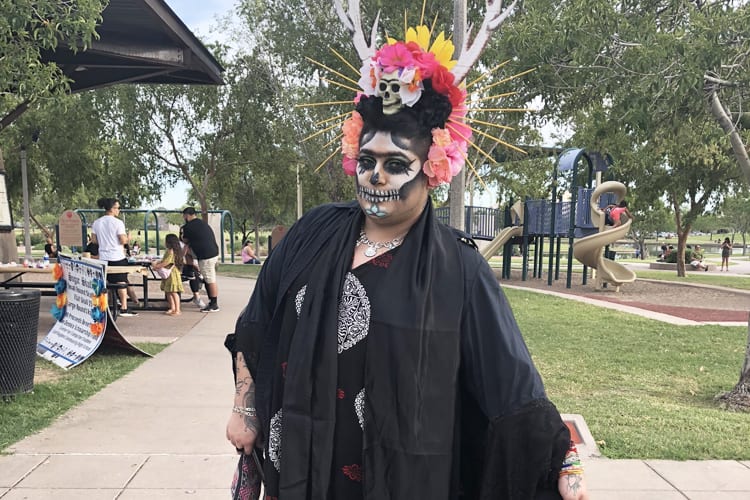Dia de los Muertos is a celebration that includes more than the typical skulls and flowers. This holiday, that is separate from Halloween, is a celebration of death and life that brings communities together.
Within the Valley, there are several events that are put on towards the last week of October and the first week of November to celebrate this holiday. One of the events to take place is the annual Dia de los Muertos Festival that has been put on by Cultural Coalition for the past seven years. The event took place on Sunday October 28 in Steele Indian School Park in Phoenix, Arizona.
“We all look at it is as something negative, something sad. Yes it’s sad, but we all know we are all going to go through it,” Tremendo Flores said on what Dia de los Muertos meant to him.
The holiday, who’s root go back several thousands of years to Mexico and Central America have spread throughout those countries and into the United States as well.
“I make an offrenda. Which is an altar in my house and I have pictures of my passed away relatives that I put upon the altar. I also do it kind of traditionally so I have a lot of Catholic crosses and things that I have grown up using for Dia de los Muertos,” said Teadora de la Garza-Crouch, a festival performer.
Some of the typical ways in which people celebrate Dia de los Muertos is by creating an offrenda, putting photos of their past loved one on the altar, and also putting out the person’s favorite food for them to eat when they come to visit.
Offrendas typically include: water, to quench the thirst of the passed loved one after they make their journey back to us, Pan de Muerto, or Day of the Dead bread, cempasúchil, which is a type of marigold flower, and of course the photo of the departed family member.
People of all ethnic backgrounds were in attendance of the festival, and no one was looked at or treated differently because of it. The festival included several booths for attendees to have their face painted, as well as booths to buy jewelry and artwork made by and sourced from Mexican artists. The majority of the booths were run by the artist themselves.
Outside of the face painting, there were kids activity based booths to have the younger generation color in their own paper sugar skull, or decorate an actual skull made out of sugar.
In addition, there were several food trucks that offered traditional Mexico food and drink for attendees to purchase. The Cultural Coalition sold t-shirts for adults and children to remember the event.
“It’s not just dressing up like a skeleton and putting flowers in your hair. It’s honoring your dead relatives and the people that you grew up with that have passed away,” de la Garza-Crouch said.
Everywhere you looked at the festival someone was dressed in either a traditional ballet folkόrico outfit, a skeleton costume, or simply a graphic t-shirt that resembled something to do with either Mexico or Dia de los Muertos specifically. All attendees were there to feel immersed and learn more about the culture that Dia de los Muertos brings to the community.
“We dance for them. We eat with them. We profess with them. We pray and we celebrate,” Jimmy Chavez, a jewelry vendor said.
As part of the festival, there were several dance companies that preformed for the crowd to watch and clap along to. The list of dance companies include: Danza Coatlicue y Danza Yolloincuauhtli, Ancestor Dance by Sankofa, Quetzalli Ballet Folklórico, Primavera Dance Company, and Ollin Yoliztli Dance Academy.
In addition to the many dance companies, there were a few bands that either accompanied the dancer’s performance or played on their own. Those bands included: Mariachi Juvenil de Mi Tierra, and Mariachi Rubor.
“It can be religious but it can also be spiritual because some people take it with Christian(ity) being Catholicism but that’s not always how it is. You can celebrate it spiritually too,” de la Garza-Crouch said.
The official date of Dia de los Muertos is on November 2.




